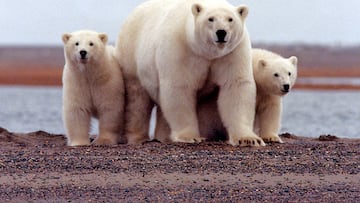Shocking discovery: Earth might have less continents than we thought according to a new study
A fascinating new study reveals how two of Earth’s established continents may constitute one whole landmass in itself.

A fascinating new study has reopened a debate which has been a common theme among geologists for years - could Earth have less continents than we previously thought?
Dr Jordan Phethean, Lecturer in Earth Sciences at University of Derby has published several books on plate tectonic theory and is a member of a research team investigating the tectonic history of the North Atlantic and how and when the continents in the northern hemisphere were formed.
By continents, we mean the large continuous landmasses on earth, separated by the oceans. To understand how they were formed, Phethean and his fellow geologists have been looking for clues on the seabed.
People often use the terms "crust" and "tectonic plates" interchangeably. It can be confusing because they are paired, and yet they are distinct from each other. pic.twitter.com/lWOmES86wv
— EarthScope Consortium (@EarthScope_sci) January 21, 2025
How many continents are there on Earth: six, seven or eight?
In the US and most other English-speaking nations, it is generally accepted that there are seven continents: North America (includes Central America and the Caribbean), South America, Europe, Asia, Africa, Australia and Antarctica.
Is Oceania a continent?
Oceania is a region of islands which includes Australia but is not classed as a continent.
Plate tectonics seems to be crucial for life on Earth, but we’ve never confirmed that it happens on other worlds – that may be about to change https://t.co/d7zZU6ZNNh
— New Scientist (@newscientist) December 12, 2024
What have geologists discovered under the Atlantic?
Dr Phethean, Luke Longley and Christian Schiffer - Geologists from Uppsala University in Sweden and the University of Derby in England joined forces to conduct a field survey of tectonic development in North Greenland - an area which scientists know relatively little about due to the lack of available data.
The team identified an isolated block of thick continental crust - buried land in the Davis Strait - the body of water that connects the Labrador Sea and Baffin Bay, between Greenland and Canada. The formation, measuring 19-24 kilometres thick, was likely separated “during a newly recognised phase of E-W extension along West Greenland’s margin”.
The Gondwana report, published in September, concluded that while it was generally understood that the North American and Eurasian tectonic plates separated approximately about 58 million years ago, it appears that the process has not finished and is still ongoing.
In layman’s terms, that means that North America and Europe is actually one single large landmass rather than separate continents. “They are, in fact, still stretching and in the process of breaking apart,” Dr Phethean explains. “Rifting and microcontinent formation are absolutely ongoing phenomena - with every earthquake we might be working towards the next microcontinent separation. The aim of our work is to understand their formation well enough to predict that very future evolution”.
So maybe there are only six continents after all with North America and Europe still joined under the sea. Dr Phethean and his team continue their investigations to understand the operation of plate tectonics on our planet.
Get your game on! Whether you’re into NFL touchdowns, NBA buzzer-beaters, world-class soccer goals, or MLB home runs, our app has it all.
Dive into live coverage, expert insights, breaking news, exclusive videos, and more – plus, stay updated on the latest in current affairs and entertainment. Download now for all-access coverage, right at your fingertips – anytime, anywhere.
Complete your personal details to comment
Your opinion will be published with first and last names